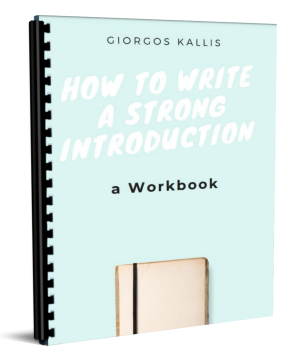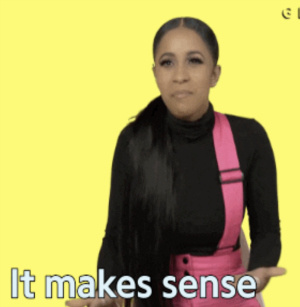How to start a paper - the Introduction section
The importance of the introduction to a paper cannot be overstated. If your paper were a movie, the introduction would be the opening scene. It is where you capture or lose your audience.
Papers of course are not movies. For one, you are very unlikely to walk the red carpet and get an Oscar for a movie called ‘A methodological exploration of alternative green discourses: the case of the EU water framework directive’.
Another difference is that no one would ever watch the beginning of a movie and then fast forward to the end, claiming ‘I watched it!’ Yet many readers will treat your paper exactly this way. Not because it is bad, but because not everyone reads everything. If you want people to look at the rest of your paper, then have a strong introduction!
The introduction should:
- provide context and motivate.
- intrigue.
- summarise core arguments and give signposts.
You provide context and you motivate, especially in the first two opening paragraphs.
In the opening paragraph you want to remind your reader that what you are dealing with is important - and this importance extends beyond the narrower topic you will be studying.
Say you are studying adaptation practices to climate change in a small village in the coast of South of Spain. You would want to start your introduction with a forceful paragraph on the importance of climate change, and adaptation policies, the vulnerability of - and expected impacts in - small coastal settlements like the one you will be studying, etc. Here is where you should cite the IPCC report, give some remarkable figure (e.g. x number of people living in small coastal settlements exposed to sea level rise) or give a catchy quote from a famous person, newspaper, etc. Here you mark the broader significance of the narrower topic you are studying, answering the question your readers have on their lips: ‘Why should I care?’
Second, you want to motivate your readers to read your paper. You want to convince them that you are doing something new and interesting, something that needed to be done. You might not have yet discovered the vaccine against cancer, but hell, you discovered why Villabuena is vulnerable to droughts, so try to wake up your reader by framing this as an important task (and crucially one that extends beyond Villabuena).
This second paragraph (or the second half of an extended first paragraph) should start sketching the research gap you are addressing. Here you are spelling out the research significance of what you are doing (as compared to the societal significance that marked the opening). What have others before you covered, and what are the important questions still pending? Why are these questions important and why is it urgent that they are addressed?
Researchers before you for example may have studied the politics of adaptation in big cities, but not in small towns that are equally vulnerable, but fall out of the radar. Researchers before you may have claimed that small towns in drylands are particularly vulnerable to droughts, but no one has yet developed an indicator to measure vulnerability.
You don't need to go to the level of detail of a literature review yet. But you do need to justify and motivate the need (and urgency, and novelty) of a study like yours, in terms that everyone can understand – specialist and non-specialist.
Next you have to intrigue. No need to start with a crime and a dead body found next to the dry river in Villabuena – you can leave the writing of ‘Chinatowns’ to others. But try the nerdy research alternative.
After you have identified the research gap, you should pose a series of intriguing ‘how and why’ questions about your case that spark the curiosity of your reader. Why some places do well during droughts and others, like Villabuena, not? Why do we pay more attention to the vulnerability of big cities and leave small ones, like Villabuena, to their fate?
I will devote a future post to the art of coming up with good research questions. For the time being, it suffices to say that it is important to have such questions and to state them clearly up front. Answering these questions is the objective of your paper.
Finally, you have to summarise your findings - that is the answers you give to your questions. I used to think that the introduction was only an opening, and that like a movie you had to keep your results as a surprise for the end.
But a paper does not work like a movie. If you keep it all for the end, then your paper is going to be like one of these movies where the audience leaves and wonders what is it that they watched. It is much better if you spell, in summary form, your core findings and claims from the very beginning.
If there are three reasons why small villages do not adapt the way they should to climate change share them with your reader from the start in the introduction. This way the readers will also get a better feel for your paper and where it is heading. And they will understand the results better when they appear. The more you repeat and hammer your core findings, the better!
The introduction should also give very clear signposts – what is the structure of your paper and how will it develop. What the reader will find where. Think of it as a map you give to your reader to navigate your paper.
The standard way many of us tend to do this is descriptive, something like ‘section 2 will present the methods and the case study, section 3 the results, section 4 will discuss the results, and section 5 will conclude’.
Thank you, genius, but we already knew that and you have already bored us to death and sent us straight to the third coffee of the day and it is only 11 am!
Remember: in a good paper, every word should count, every word should fulfil some role. Your readers are people like you – they know the general structure of a scientific paper ever since their undergrad days.
Use instead the presentation of the structure of your paper to warm up your reader to your core thesis and the claims you will support in the paper. Write for example, in section 2 I argue x, y. This raises the question z. The answer defended in section 3 in turn is that a, b and c.
Don’t say for example that section 2 will present the methods, but make an argument about the methods: ‘In section 2, I will be defending why studying a small village in the southern coast of Spain holds broader lessons for adaptation processes, namely blah blah blah’. ‘Section 3 shows how and why adaptation processes end up reproducing blah blah blah’. ‘Section 4 asks why and how blah blah blah. Surprisingly, and unlike what has been argued in the literature till now, we find that blah blah blah’. (Don’t write blah blah blah, that’s just an example).
Argue, argue, argue! Do not describe! (If you want some help with structuring your paper as a series of arguments, check our older post on writing an arguments-based sentence outline).
O.k., all this is easier said than done – as is the case with pretty much everything that starts with the ambitious words ‘how to’. Perhaps it still all sounds too abstract.
In the workbook I prepared for you this week, I pose some questions to help you start sketching the core components of your paper’s introduction. I give you examples from my own work to illustrate what I mean and how I do it. And I discuss some other questions you might have, such as whether to include a description of your methods and a literature review in the introductory section, or not. You will find the workbook below.
Enjoy!
What aspect of the introduction section do you struggle with the most? Leave your comments below.














